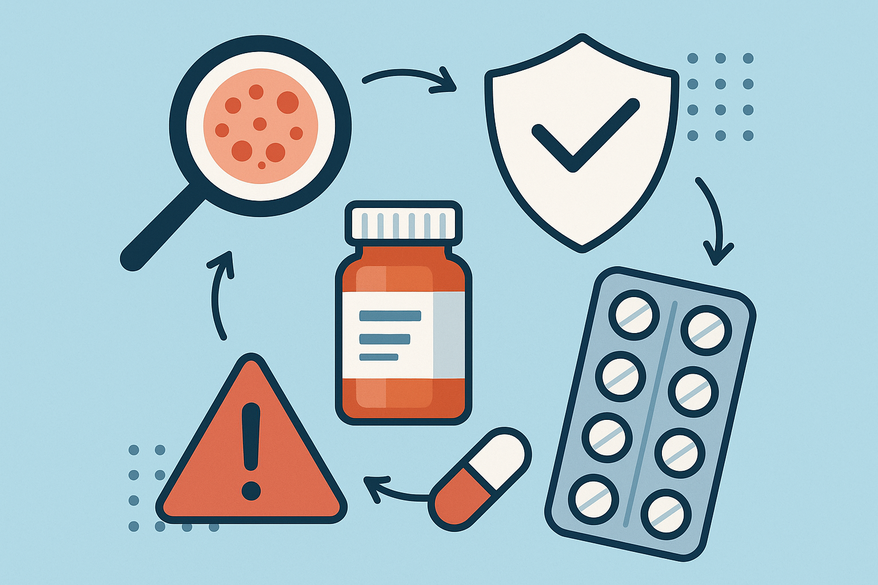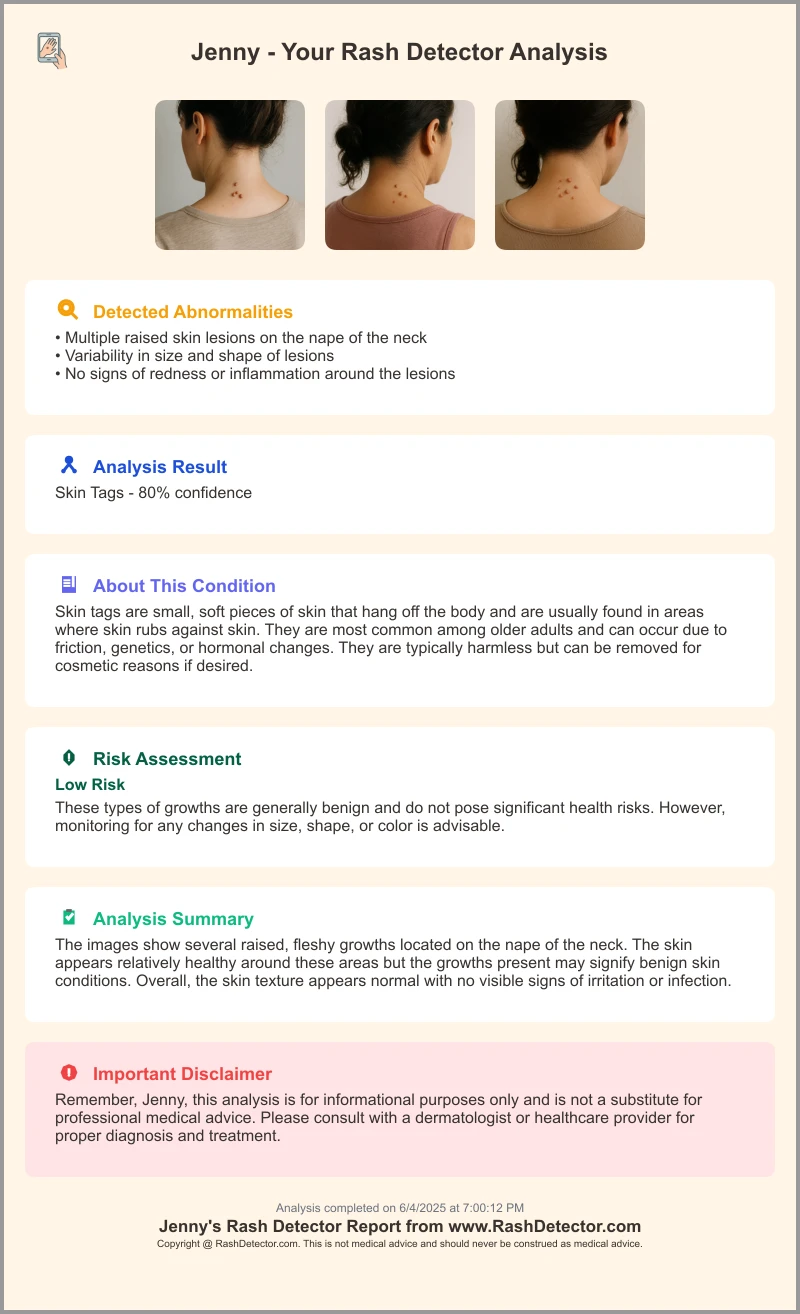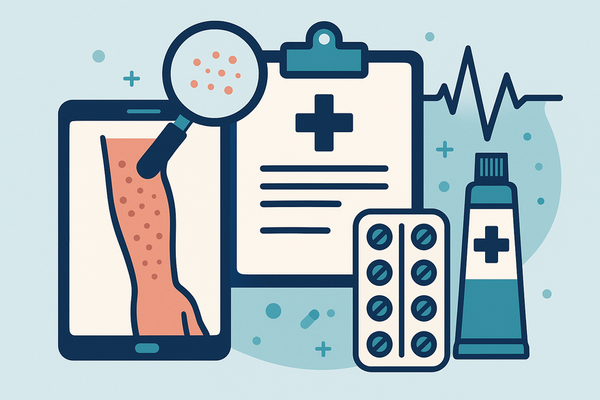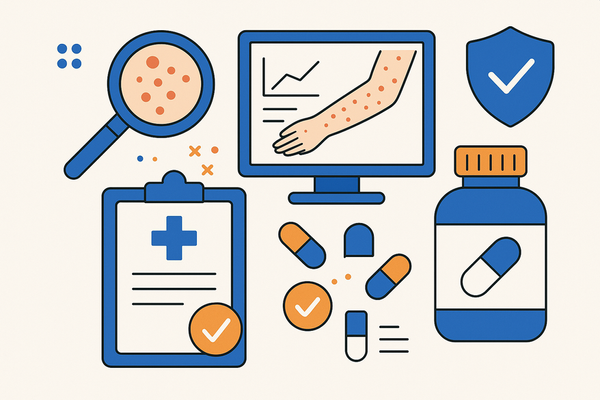Medication Rash Treatment: Your Complete Guide to Identifying and Managing Drug-Induced Rashes
Discover effective medication rash treatment strategies for identifying and managing drug-induced reactions. Learn how to prevent severe complications and ensure safety.

Estimated reading time: 8 minutes
Key Takeaways
- Early Recognition: Spot drug-induced rashes promptly to prevent complications.
- Common Culprits: Antibiotics, anticonvulsants, and NSAIDs are high-risk classes.
- Treatment Spectrum: From OTC antihistamines and topical steroids to systemic corticosteroids and hospital care.
- Emergency Signs: Blistering, respiratory distress, high fever—and know when to seek urgent help.
- Prevention: Maintain allergy history, consider pharmacogenetic screening, and plan for emergencies.
Table of Contents
- Understanding Medication-Induced Rashes: Drug Eruption Mechanisms
- Recognizing Urticaria and Other Rash Symptoms
- Medication Rash Treatment Options with Antihistamines
- When to Seek Help for Stevens-Johnson Syndrome
- Preventative Measures and Pharmacogenetic Screening
- FAQ
Understanding Medication-Induced Rashes: Drug Eruption Mechanisms

- Immunological Mechanisms
- Immediate (Type I): IgE-mediated hives or angioedema within hours.
- Delayed (Type IV): T-cell–mediated maculopapular eruptions 4–14 days after drug initiation.
- High-Risk Drug Classes
- Antibiotics (penicillins, sulfonamides)
- Anticonvulsants (phenytoin, carbamazepine, lamotrigine)
- NSAIDs (ibuprofen, naproxen)
- Predisposing Factors
- Prior drug allergy and cross-reactivity
- Concurrent viral infections (e.g., Epstein–Barr plus ampicillin)
- Immunodeficiency, advanced age, polypharmacy
- Differentiation from Other Dermatoses
- Temporal link: rash follows drug start
- Morphology: morbilliform or maculopapular patterns
- Resolution upon withdrawal of the offending agent
Recognizing Urticaria and Other Rash Symptoms
- Immediate Hypersensitivity Signs
- Urticaria: raised, itchy wheals migrating across the skin
- Angioedema: swelling of eyelids, lips, or extremities
- Delayed Reaction Signs
- Morbilliform eruption: pink macules coalescing into patches 4–14 days post-drug
- Post-inflammatory desquamation: mild peeling during healing
- Identifying Drug Causation
- Document start and onset dates—see Identifying and Managing Drug-Induced Rash Symptoms.
- Red Flags Requiring Urgent Care
- High fever with rash and lymphadenopathy (possible DRESS syndrome)
- Blistering or widespread peeling (SJS/TEN)
- Difficulty breathing or throat tightness (anaphylaxis)
Medication Rash Treatment Options with Antihistamines
- Immediate Step
Discontinue the offending medication under medical supervision. Do not stop essential drugs without guidance.
- Over-the-Counter (OTC) Treatments
- Antihistamines: diphenhydramine, cetirizine, loratadine
- Topical corticosteroids: hydrocortisone 1% cream
- Soothing agents: calamine lotion, pramoxine
- Supportive care: cool compresses, colloidal oatmeal baths, ceramide emollients
- Avoid irritants: harsh soaps, rough fabrics
For a comparison of top OTC anti-itch creams, see Best Anti-Itch Cream: Top OTC Solutions for Instant Relief.
- Prescription Treatments
- Systemic corticosteroids: prednisone taper over 7–14 days
- Monitor glucose, blood pressure, and mood during therapy
- Hospital-Based Care
- Indications: epidermal loss/blistering >10% BSA, SJS/TEN, DRESS, anaphylaxis requiring IV therapy
- Interventions: IV steroids, fluid/electrolyte replacement, burn-unit wound care
When to Seek Help for Stevens-Johnson Syndrome
- Emergency Symptoms
Respiratory distress or throat swelling → call 911 immediately.
- Urgent Outpatient Evaluation
Rapid rash spread, blistering, high fever, lymphadenopathy.
- Importance of Skin Testing
Determine specific drug allergies to guide future prescribing.
- Potential Complications if Untreated
Organ damage, extensive skin loss, scarring, and increased mortality risk.
Preventative Measures and Pharmacogenetic Screening
- Complete Allergy History
Disclose all past reactions with details on the drug and reaction type.
- Risk-Factor Discussion
Assess prior allergies, infections, immunodeficiency, and autoimmune disorders.
- Medication Review
Eliminate non-essential drugs and avoid polypharmacy.
- Pharmacogenetic Screening
Use genetic tests when available to identify high-risk individuals.
- Patient Self-Monitoring
Keep a journal of drug start and rash onset dates; photograph changes.
- Emergency Planning
High-risk patients should carry epinephrine auto-injectors and wear medical ID.
FAQ
- Q: What triggers a medication-induced rash? A: The immune system may recognize a drug as foreign, causing reactions from mild erythema to severe blistering.
- Q: How can I treat a mild drug rash at home? A: Discontinue the drug under guidance, use OTC antihistamines, apply hydrocortisone cream, and soothe with cool compresses or oatmeal baths.
- Q: When should I seek medical attention? A: If you experience blistering over a large area, high fever, breathing difficulty, or swallowing issues, seek urgent care.
- Q: Can I prevent future drug rashes? A: Yes—maintain detailed allergy records, consider pharmacogenetic screening, and discuss risks before new prescriptions.
- Q: Are genetic tests helpful? A: Pharmacogenetic screening can identify individuals at high risk for specific drug reactions, improving safety.





